Kitchen drawers vs cabinets - which should you choose?
Deciding on drawers or cabinets is an essential part of kitchen planning - but why not have both?
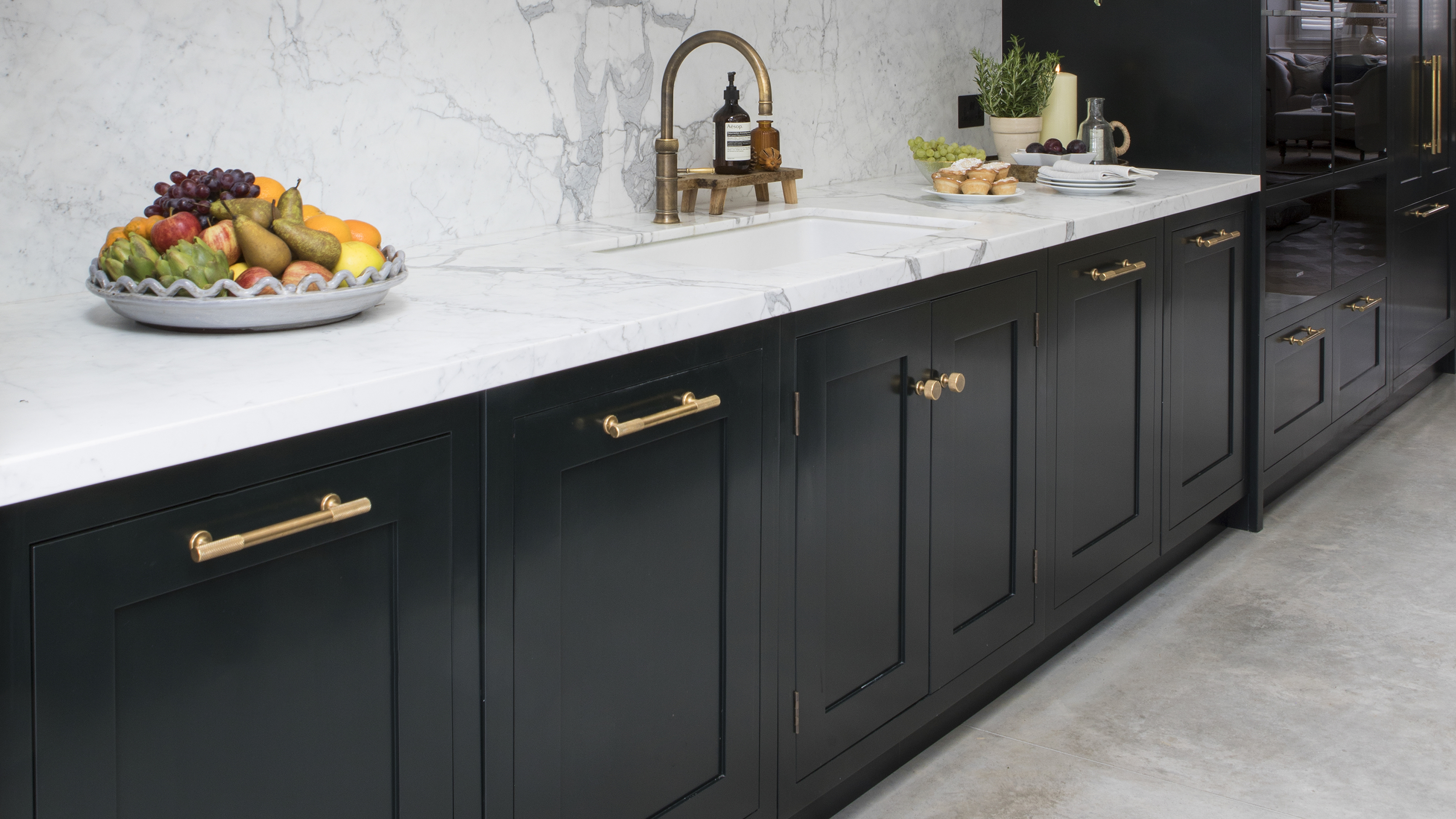

Whether you’re planning an imminent kitchen design or dreaming of your perfect space, deciding on drawers vs cabinets for your cooking space will be an essential part of the kitchen renovation process.
‘The amount and type of storage in your kitchen is one of the most crucial elements of the design and should be considered right from the start so that the kitchen will fulfil all your needs from the get-go,’ says Sinead Trainor, kitchen category manager at LochAnna Kitchens. ‘There’s little point in having a beautiful kitchen that’s the envy of your friends if it doesn’t work for you in everyday use.’
And, if you’ve found yourself asking, which is better – drawers or cabinets – we’ve consulted the experts to get a definitive answer, which should help you to better plan out your kitchen layout going forward.
Drawers vs cabinets - which is best for your kitchen?
When it comes to opting for drawers vs cabinets, or vice versa, it may come down to personal preference. But there are definite pros and cons to both.
‘Cabinets have always been the go-to for kitchen design, but this has changed in recent years as the benefits that drawers offer have become more widely known,’ suggests Richard Davonport, nanaging director at Davonport Kitchens.
‘There are also several things to consider, particularly if you are aiming to make your kitchen more inclusive for different ages and abilities in your family,’ Vaila Mossrion, RIBA, Stannah’s inclusive design expert, outlines. ‘To maximise accessibility, and to help make more of the things in your kitchen more conveniently located, the ideal is to try to minimise the amount of bending or crouching down or stretching up that you have to do.’
Keep reading to see which options could work best for you and your kitchen.
Drawer pros

1. They provide easier access
‘As drawers can fully extend out, contents are easier to reach and items don't get lost in the back,’ Jamie Robinson, interiors expert and installation manager at Value Doors, affirms. You also don’t need to bend or kneel down to get access to items, as you might with a cabinet. Because of this, drawers can be more beneficial to those with mobility issues or disabilities.
‘Unlike traditional cabinets, drawers allow you to effortlessly reach items, even those stored at the back, without the need to bend down or rummage through,’ Brani Hadzhi, Head of Design at Multiliving by Scavolini, remarks.
‘This not only saves you time and effort but also eliminates the problem of unused space typically found in the back of cabinets. By maximising accessibility, drawers effectively increase the overall storage capacity of your kitchen.’
2. Better for storing smaller items
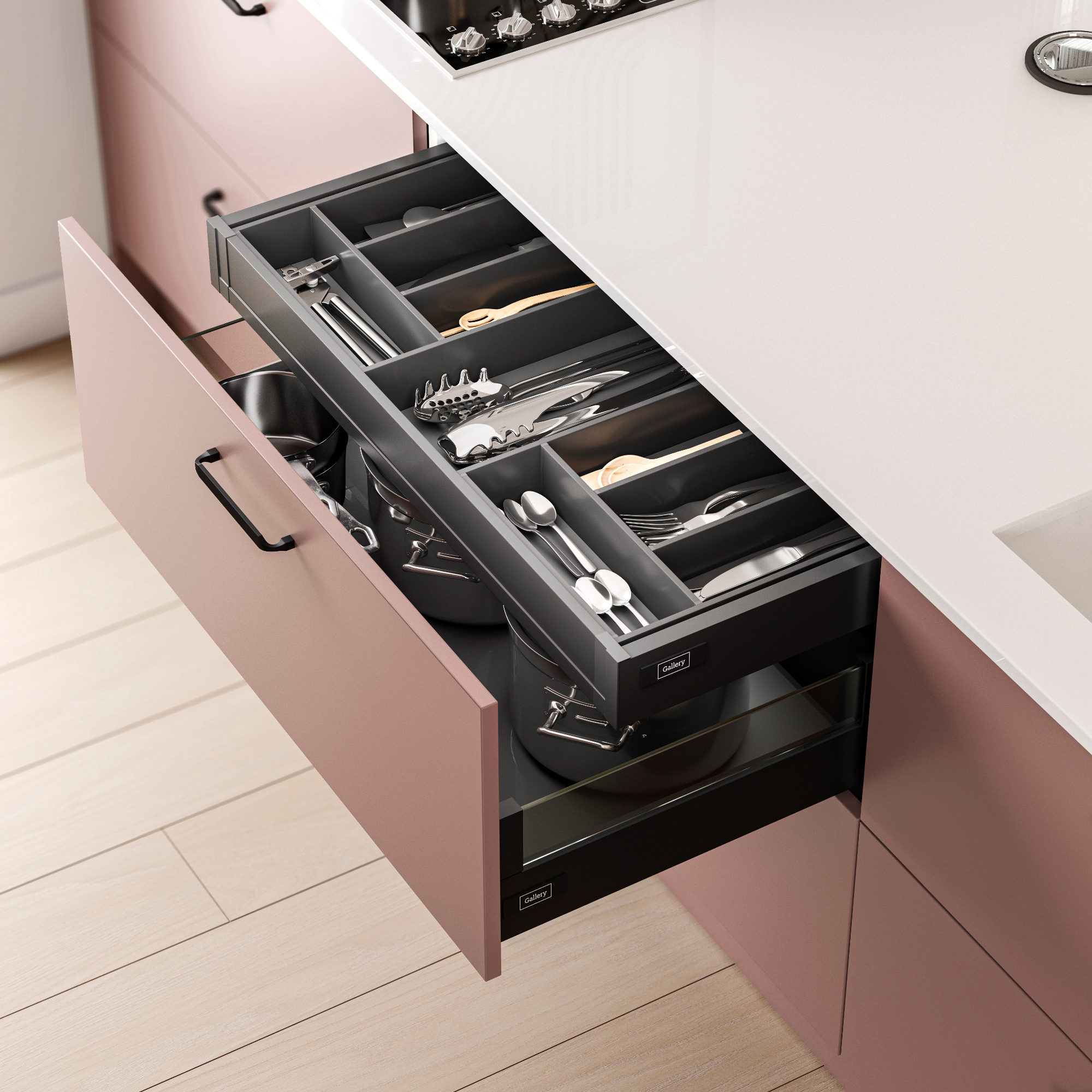
‘Kitchen drawers can be designed with organisers of various depths, enabling you to store different items in separate compartments,’ Brani adds. ‘For instance, you can use shallow drawers to neatly arrange your cutlery, ensuring everything is in its rightful place.’
Drawer dividers and cutlery storage trays can be especially helpful for keeping drawers organised.
3. Can be better for storing heavy items
‘We tend to see drawers being used under hobs or on kitchen islands, as they make a fantastic storage option when it comes to heavy duty items such as pans,’ Richard asserts. ‘Cooking equipment – such as saucepans, plates, and casseroles dishes – are better suited to being stored in oversized drawers as it makes it much easier to access and find what you need.’
‘Bespoke kitchens also offer the additional option of items such as plate dividers, so that each size and type of plate has a space and won’t move around as drawers are opened,’ he continues.
You can also achieve this sort of organisation on a budget by utilising something like a pegboard in your drawer, to allow you to use dowels to separate each stack of plates. Or, you purchase a ready made plate divider to insert into your drawer or drawers.
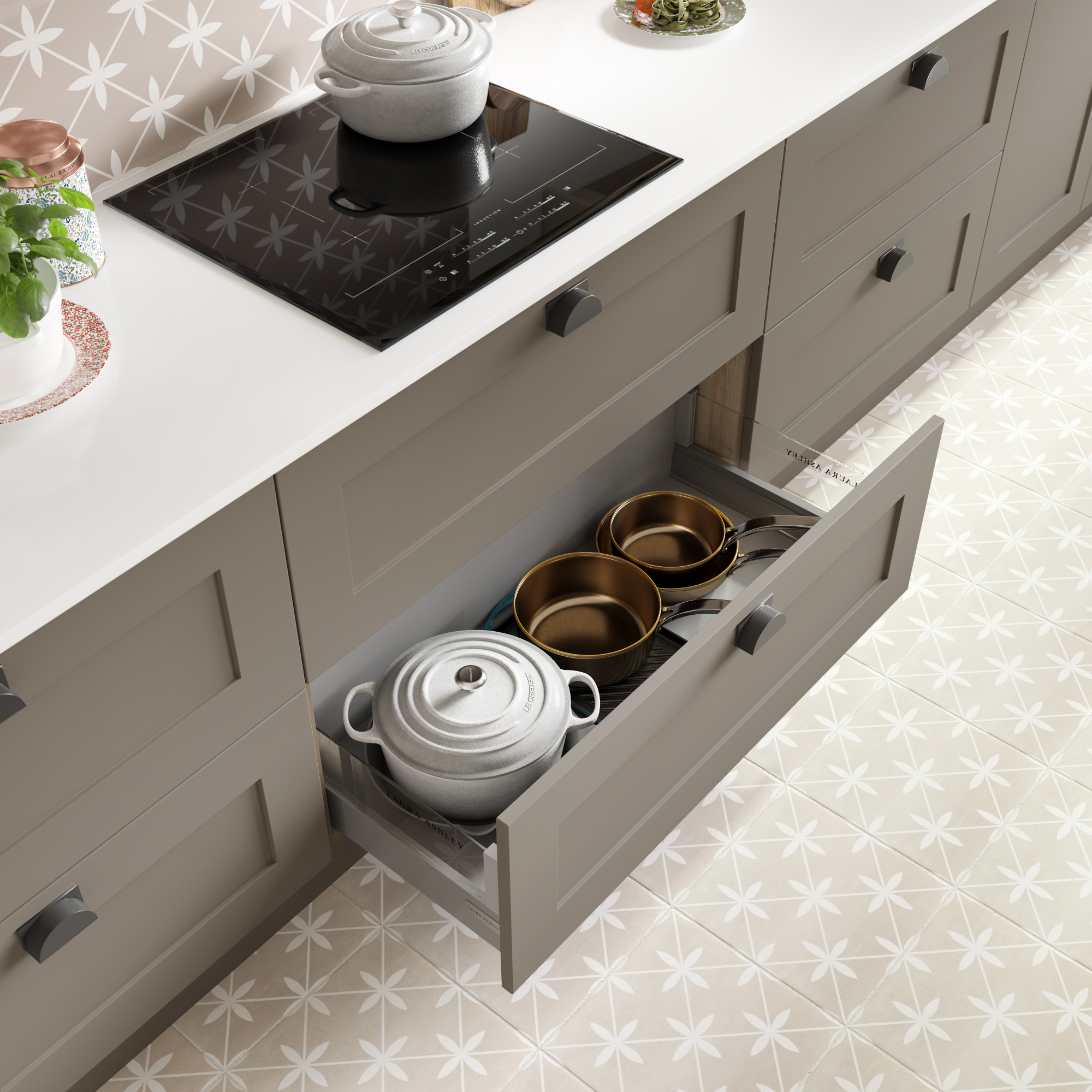
Drawer cons
1. More difficult to store small appliances
Unfortunately, drawers aren’t ideal if you plan on storing small appliances, such as stand mixers and coffee machines, or even bottles and tall food storage containers. The same can be said for other items that may be stored in your kitchen, such as vases.

2. Can look messy without proper organisation
While drawer dividers can certainly come in handy and help you to keep everything from your utensils and cutlery to baking essentials organised, ‘without appropriate organisation and maintenance, drawers may become disordered, leading to a cluttered and messy kitchen,’ Jen Nash, head of design at Magnet comments.
You certainly need to keep on top of the organisation as you transfer your clean plates, pots, pans and utensils back into your drawers after you’ve washed them.
3. Some drawers can sag
Depending on the material that your drawers are made from, heavy items or if any liquid has been spilled onto them, can cause the drawers to sag. While this is unlikely with quality drawers, cheaper MDF-style or flat-pack drawers can warp under the weight or pressure. If you’re designing your kitchen with longevity in mind, this is something to keep in mind.
4. It’s not possible to have drawers in corner units
In making the most of our kitchen layouts, many of us will have corner units. Annoyingly these can be trickier to utilise to their fullest, compared to other units. ‘It’s not possible to have drawers in corner units,’ Symphony’s design manager, Josie Medved, confirms.
This is because there isn’t the space or room for a drawer to pull out. So, if you have several corner units in your kitchen, however big or small, these will need to remain as cabinets. But that’s not to say that you can’t add shelves or other storage solutions.
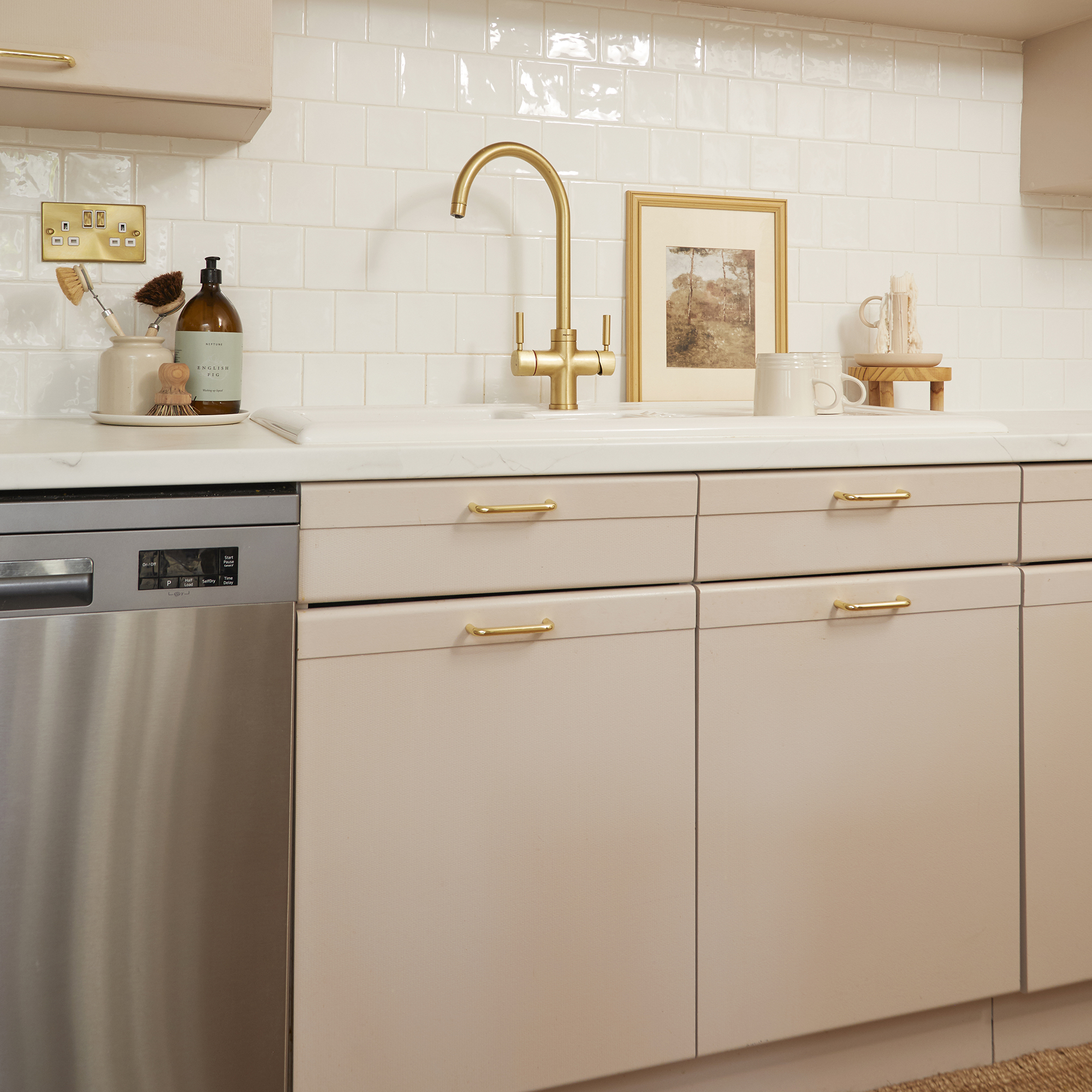
5. Drawers are more expensive than cabinets
Kitchen drawers are typically ‘more expensive due to additional hardware and mechanisms for smooth operation,’ Sinead explains. ‘The additional craftsmanship and materials can set it at a higher price point,’ too, Looeeze Grossman, founder and CEO of The Used Kitchen Company, concurs.
While there is no typical price for a single drawer unit, particularly if you choose a bespoke or custom design, the most affordable kitchen drawer unit that we found was in the mid-hundreds. A kitchen cabinet unit, on the other hand, can start from as low as around £50.
Cabinet pros

1. Better for storing large, tall items
‘Cupboards are better for large, tall items, for example. food mixers, tall containers, vases, pressure cookers, etc.’ says Josie. They’re also ‘better for storing small appliances, especially bi-fold dresser units which sit on the worktop,’ making them ‘ideal for coffee makers, toasters etc.’ So, if you’re looking to create your dream coffee station, a cabinet would work better for this.
2. You can add shelves
A cabinet doesn’t simply have to be one big cavernous space. You can use as many or as few shelves as you need to accommodate everything from glassware and mugs to food. Because of this, it also makes cabinets the ideal choice for pantry areas.
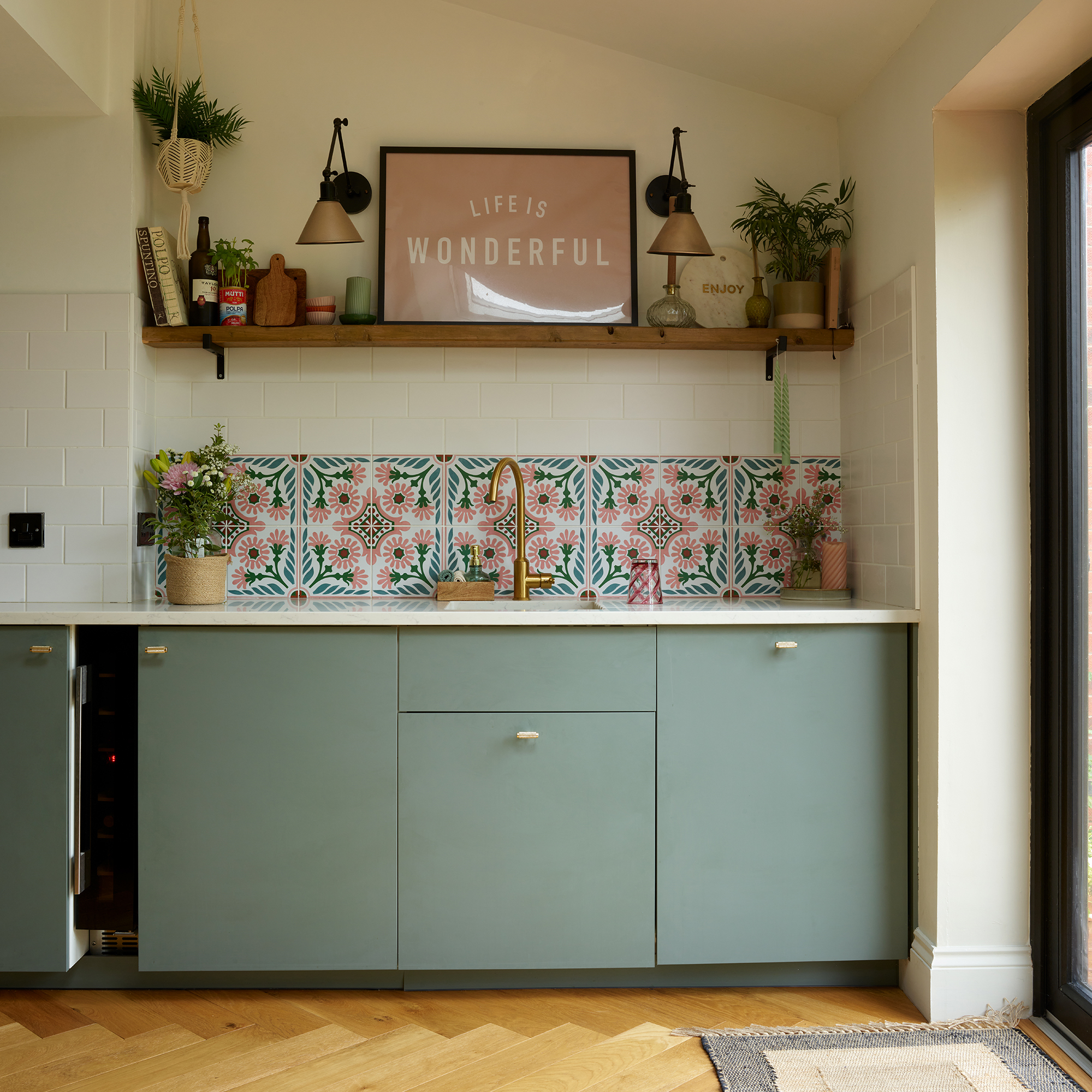
3. More affordable than drawers
If you’re in the process of building your dream kitchen, you may imagine that money will be no object. However, with the cost of living crisis continuing twinned with the rise in the cost of materials and labour, many of us will be keeping an eye on our spending. And cabinets tend to be more affordable than drawer units.
Cabinet cons
1. Cabinets can be inaccessible
It’s sometimes rather tricky to find or retrieve items that are at the very back of a base unit cabinet. ‘How many of us have all found those things at the back of the kitchen cupboard that we forgot we even had?’ Vaila asks. ‘Kitchen cupboards are quite deep (normally about 60cm/2ft) and therefore it’s notoriously difficult to get to the things at the back without pulling everything else out first, even when you have been practising your squats.’
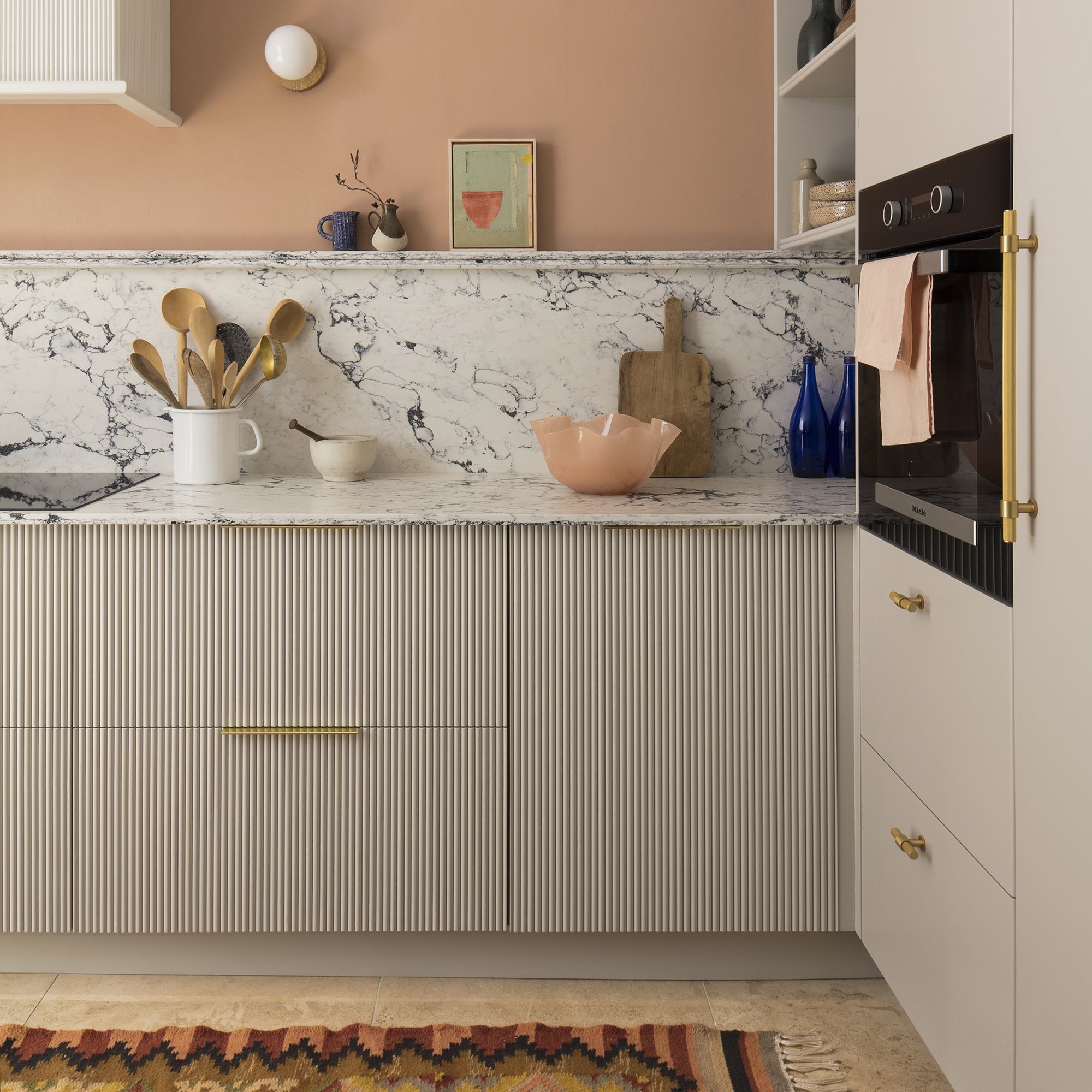
2. Base cabinets can cause back strain
You will also have to bend down or get onto your knees, in some cases, to reach the very back of a base unit cabinet. ‘If you prefer the look of a cupboard door, or are dealing with a corner situation, there are lots of different pullout basket solutions that can be fitted within the unit to give the appearance of a cupboard, with the functionality of a drawer,’ Vaila adds. But this will come at an additional cost.
Final verdict
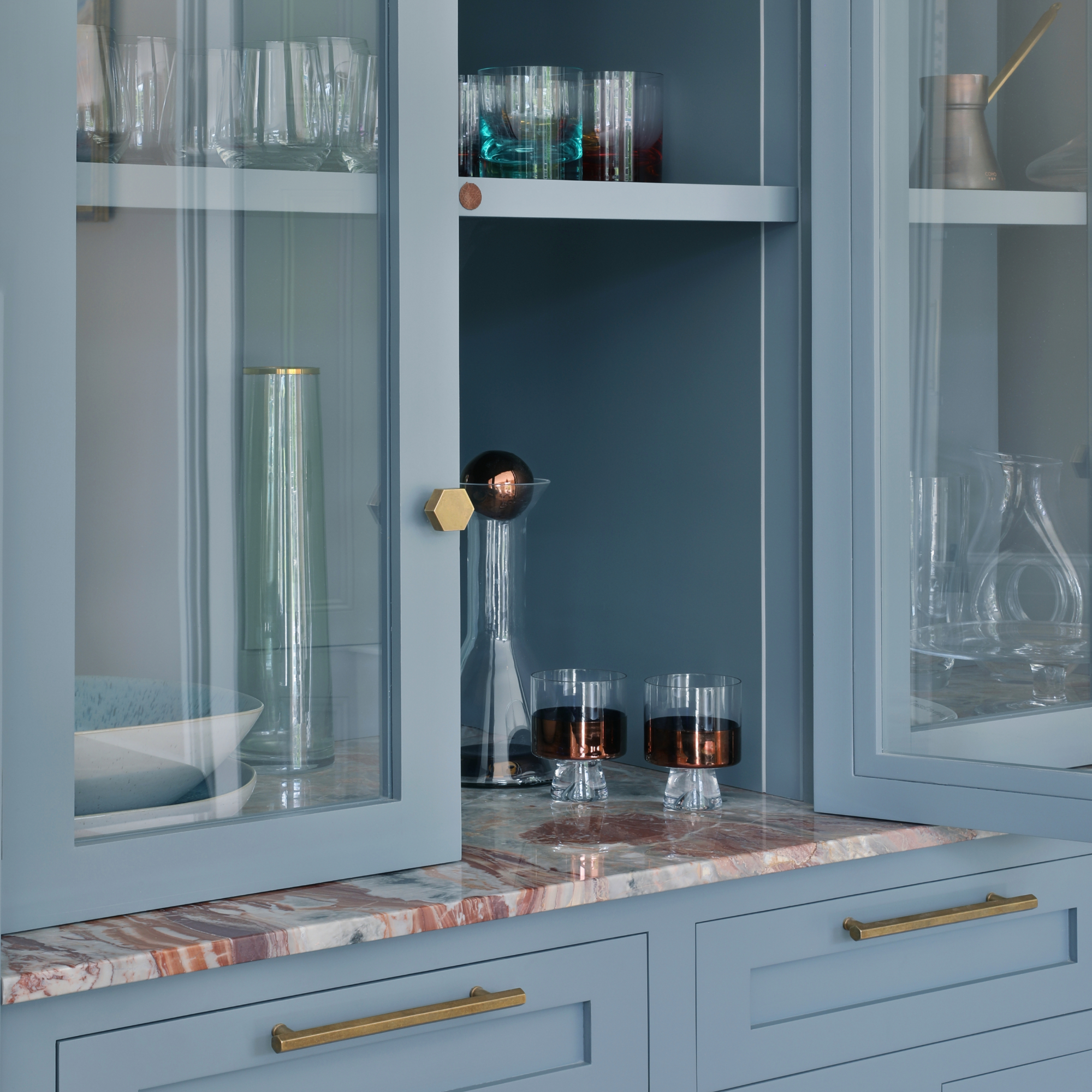
‘There are many debates about whether to pick drawers or cabinet doors for your kitchen design; however, it very much depends on the space as both can work in beautiful ways,’ suggests William Durrant, owner of Herringbone Kitchens.
‘A kitchen ideally should include a combination of both drawers and cabinets to maximise storage and accessibility,’ Jamie concurs.
‘When it comes to successful storage, a balance of drawers and cabinets is key,’ according to Tom Howley’s creative director, Tom Howley. By creating ‘defined areas for prepping, cooking, serving, and cleanup,’ this creates a cohesive and much more functional kitchen.
‘This can be achieved by grouping and positioning relevant items accordingly – pots, pans, and utensils belong next to the hob, glassware can be organised in kitchen island drawers, and linens and dishes stay in cabinets nearest to the dining table,’ he adds.
FAQs
Are kitchen drawers better than cupboards?
‘Drawers are being used more than ever in kitchens because they’re easy to open and give you better access to your pots and pans. However, drawers are only handy for the base units and don’t really work as corner units. So a mix of drawers and cupboards works best,’ explains Penelope Jacobs, kitchen design expert at MyJobQuote.co.uk.
What to do if your kitchen has no drawers
If you’ve just moved into a new home and a kitchen renovation won’t be on the cards for a while, or you’re renting, you may have thought that there isn’t much you can do if there are no drawers. But this isn’t the case.
‘If your kitchen lacks drawers, consider alternative storage solutions like freestanding storage units, cupboard organisers or pull-out cabinet trays,’ says Jen. ‘By implementing these solutions, you can optimise the available space in your kitchen and create a more organised and functional space without drawers.’
‘Alternatively, you can use carousel and swivel-out shelves to make things easier to access,’ Penelope adds.
Are kitchen drawers more expensive than cabinets?
‘Typically, kitchen drawers are more expensive than cabinets due to their intricate mechanics and demanding installation process; drawers require additional mechanical components such as slides and runners,’ Jen explains. ‘Additionally, installing drawers can be more labour-intensive as the fitting process requires more precision than fitting cabinets.’
Of course, ‘the cost of drawers versus cabinets varies based on materials, design, and size,’ Sinead declares.
Get the Ideal Home Newsletter
Sign up to our newsletter for style and decor inspiration, house makeovers, project advice and more.

Ellis Cochrane has been a Freelance Contributor for Ideal Home since 2023. Ellis has been writing about homes, interiors and gardens for four years now, with her also contributing to House Beautiful, Country Living, Expert Reviews, Real Homes and Stylist.
-
 My go-to Ninja coffee machine is on sale for Easter weekend
My go-to Ninja coffee machine is on sale for Easter weekendIt makes coffee shop quality achievable at home
By Molly Cleary
-
 When to plant out annual flowering plants for vibrant, colourful garden borders – and give them the best start, according to experts
When to plant out annual flowering plants for vibrant, colourful garden borders – and give them the best start, according to expertsNot sure when to plant out annual flowering plants? We've got you covered...
By Kayleigh Dray
-
 I'm a kitchen decor editor and didn't like this tableware trend - until I saw H&M Home's designer-look plates
I'm a kitchen decor editor and didn't like this tableware trend - until I saw H&M Home's designer-look platesThey made it easy to justify a new crockery set
By Holly Cockburn